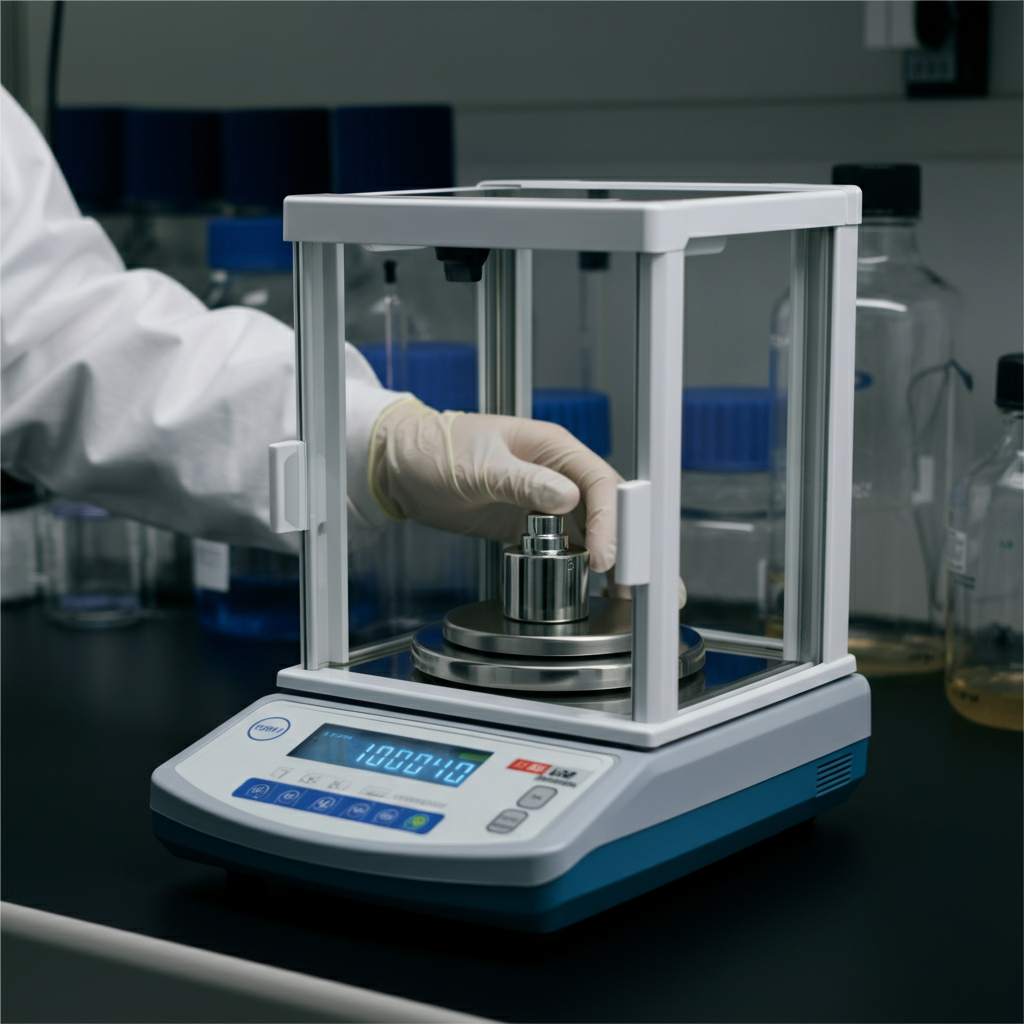For professionals in laboratories and industries where precision is paramount, an analytical balance is a critical tool. From measuring minute quantities of chemicals to ensuring consistent product quality, its accuracy can impact research outcomes and operational decisions. However, ensuring precise and reliable results depends on following the correct precautions when using an analytical balance. Let’s explore the essential steps to maintain accuracy, avoid errors, and extend the lifespan of this vital equipment.

Why Precautions Are Essential When Using an Analytical Balance
Analytical balances are highly sensitive instruments, designed to detect small variations in weight (up to 0.1 mg or less). This sensitivity means that even the slightest mishap—in handling, environmental conditions, or calibration—can lead to errors in weighing. Precautions ensure not only accurate results but also the longevity of the balance and the safety of those handling it.
1. Calibration: The Key to Accuracy
a) Regular and Correct Calibration
Calibration is the foundation of accurate weighing. Analytical balances must be calibrated before each use or after any significant environmental change, such as temperature fluctuations or relocation of the balance. Use certified calibration weights to ensure precision.
b) Internal vs. External Calibration
Many modern balances are equipped with internal calibration mechanisms. While convenient, external calibration using certified weights provides an added layer of reliability. Always follow the manufacturer’s recommendations for your specific model.
c) Avoid Calibration Errors
Handle calibration weights with care by using tweezers or gloves to prevent contamination. Even tiny residues or fingerprints can affect the accuracy of calibration weights.
2. Proper Placement and Environmental Control
a) Stable Surface Placement
Place the balance on a vibration-free, level surface. Uneven or unstable surfaces can cause significant deviations in measurements.
b) Mitigate Environmental Influences
Since analytical balances are sensitive to airflow, vibrations, and temperature changes, these factors must be controlled. Place the balance away from windows, doors, HVAC vents, and equipment that generates vibrations, like centrifuges.
c) Draft Shields for Precision
Always use the balance’s draft shield to block air currents that can affect the weighing process. Keep the shield clean and close the doors gently to avoid displacing the balance.
3. Handling Techniques for Accurate Weighing
a) Minimize Direct Contact
Direct handling of samples or containers can lead to contamination and inaccurate readings. Use gloves, tongs, or appropriate tools to handle materials.
b) Allow Samples to Reach Room Temperature
Weighing samples with significantly different temperatures from the environment can lead to errors caused by air currents or condensation. Always allow the substance to stabilize at room temperature before weighing.
c) Use Proper Containers
Choose the correct container for weighing, whether it’s a beaker, crucible, or watch glass. The container should be dry, clean, and compatible with the substance being weighed.
d) Tare Responsibly
Always tare the balance after placing the empty container, ensuring you measure only the net weight of the substance.
4. Employ Routine Maintenance and Cleaning
a) Clean After Each Use
After every weighing session, clean the weighing pan and surrounding areas using a soft, lint-free cloth or a brush. Prevent spillage of samples, as residues can compromise future measurements.
b) Handle with Care
Avoid overloading the balance, as this can damage the internal mechanisms. Respect the maximum capacity specified by the manufacturer.
c) Scheduled Servicing
Regularly service your analytical balance as noted in the user manual. Maintenance by trained technicians ensures the balance remains in optimal working condition.
5. Observe Safety Protocols
a) Safe Handling of Hazardous Materials
When weighing volatile, corrosive, or toxic samples, use appropriate personal protective equipment (PPE) such as gloves, masks, and lab coats. Work in a fume hood if required.
b) Proper Disposal of Residues
Dispose of leftover materials responsibly, adhering to all lab safety and environmental regulations. Contaminants left on the balance or in the surrounding area can pose health risks and affect weighing precision.
c) Training and Education
Ensure that all users understand the proper operation of the analytical balance. Lack of training is a common source of errors and damage to equipment.
6. Monitor and Record Results
a) Consistent Documentation
Accurate record-keeping is vital for traceability in professional settings. Document calibration results, environmental conditions, and any issues encountered during weighing.
b) Use Connected Systems
Many modern analytical balances support data transfer to digital systems. Integrated software can reduce manual errors and streamline your workflow.
7. Invest in Quality Accessories and Upgrades
a) Anti-Static Devices
Static charges can interfere with precise measurements. Use an anti-static ionizer to neutralize charges when working with lightweight or fine powders.
b) Protective Covers
Covers shield the balance from dust and spills, maintaining its integrity over time.
c) Temperature and Humidity Monitors
Investing in instruments to monitor and regulate the microenvironment around the balance can further enhance accuracy.
Summary
To achieve accurate and repeatable results, every step in the operation of an analytical balance must be approached with meticulous care. From regular calibration and careful handling to controlling environmental factors and maintaining the balance, these precautions form the basis of precision science and industry practices.
By implementing these guidelines, you can prevent errors, avoid equipment damage, and ensure that your analytical balance continues to deliver reliable performance. Precision begins with responsibility, and with the right precautions, your analytical balance can become a true asset to your work.